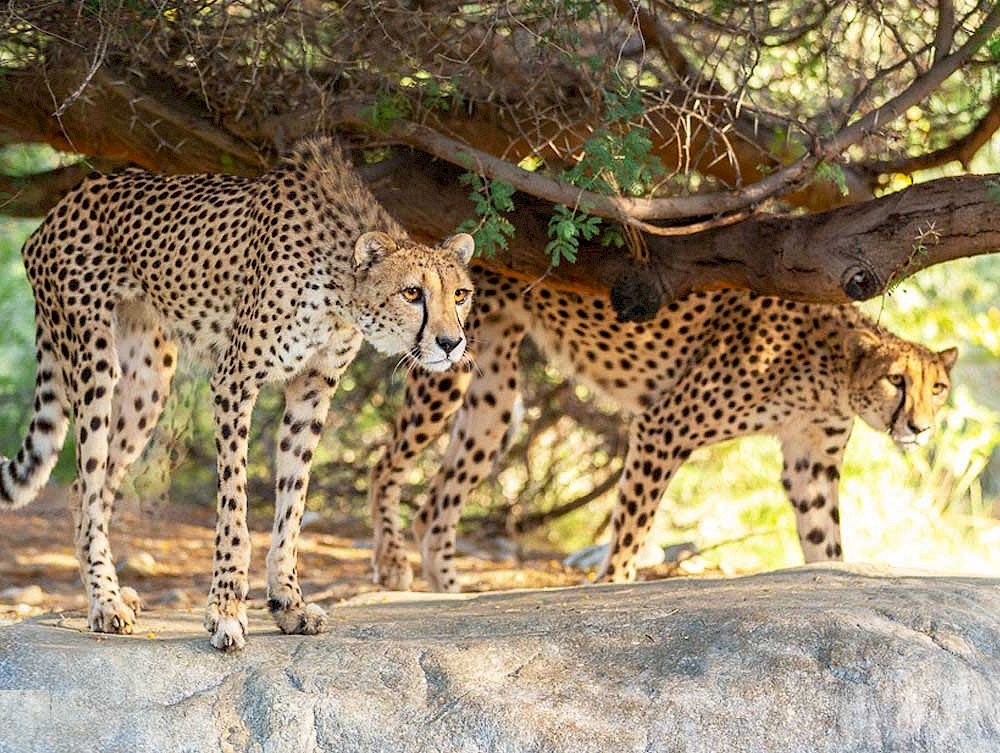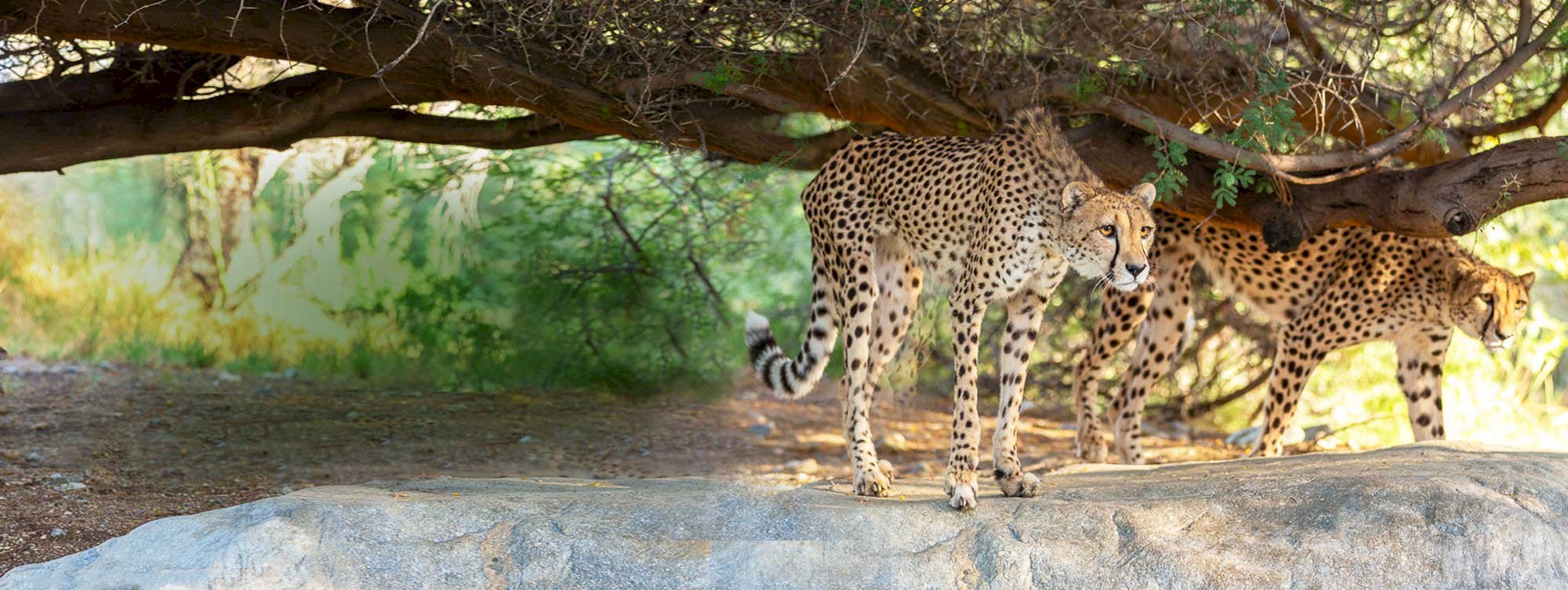Waldrapp Ibis Chick Hatched at The Living Desert
July 1, 2022
We are pleased to share that a waldrapp ibis chick hatched this spring at The Living Desert Zoo and Gardens! The Living Desert has a tradition of naming waldrapp ibis after Egyptian royalty or deities, as they were very significant in ancient Egyptian culture. The newest addition to the flock, a male, was named Khonsu, after the ancient Egyptian god of the moon.

Also known as the Northern bald ibis, as adults, these raven-sized birds have iridescent black plumage, a long, downward-curving red bill, and long legs. Their bald heads are covered with wrinkled pink skin and they have a shaggy ruff of black feathers around their neck, which is raised during courtship displays. The waldrapp ibis is found in the coastal areas of Morocco and other select areas of the Middle East.
Waldrapp ibis are currently listed as endangered by the IUCN (International Union for Conservation of Nature) and The Living Desert is one of only nineteen AZA facilities who house this particular species.
Khonsu was the nineteenth waldrapp ibis hatched at The Living Desert since 1998. While chicks go normally through the hatching process on their own, Khonsu required an assisted hatch. He began to hatch on a particularly dry day and the membrane of the egg, a thin layer under the hard shell, was beginning to dry up around him. While the membrane is normally easily broken by the chick, it had become leathery and started to shrink, restricting his movement.
At this point, The Living Desert's animal care and veterinary teams intervened to protect the welfare of the chick. The team successfully rehydrated the membrane and pulled back some of the shell. From there, Khonsu was able to continue the normal process and finish hatching on his own.
Over the past several months, Khonsu has grown quickly and has transformed from a fluffy, gray chick, to a near adult, with striking dark feathers. He is currently thriving alongside his family of five other ibis. You can visit them at in the African Aviaries section of the park. Below, you'll see Khonsu (right), pictured with his father, Ra (left.)

Did you know?
- These birds were once common in the Alps of central Europe and their meat was considered a delicacy. Since young ibis were taken from their nests and served to royalty, much of what is known about their former range is taken from medieval cookbooks.
- Their long legs and long, downward-curving bill make them well adapted to obtaining food by probing shallow water, mud, and grasses. The tip of the bill is very sensitive, allowing the birds to detect food more by touch than by sight.
- The ancient Egyptian god of wisdom was depicted as a human with the head of an ibis.
- The waldrapp ibis’ genus name is "Geronticus," which is derived from the Greek for "old man," a reference to their bald and wrinkled heads.
Did you know that you can become an agent of conservation by symbolically adopting one of the animals at The Living Desert, including the waldrapp ibis? Your gift enables us to continue providing the highest level of care to our animals, educate the next generation about the world’s deserts, and conduct important conservation programs and research. Adopt today!













